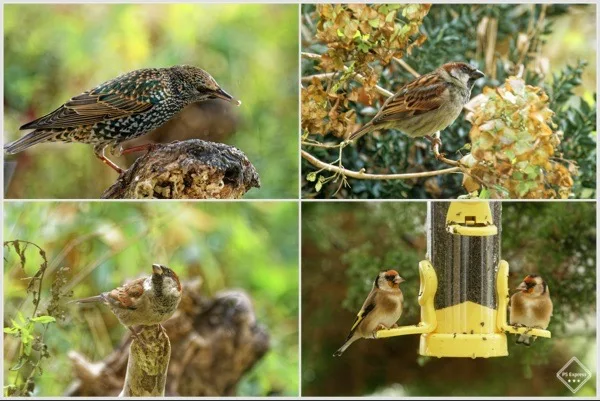2024 blew out with weather warnings and amber alerts, howling winds, rain and snow November's named storm Bert was followed by Storm Darragh at the beginning of December and the eerie calm yesterday and today, an ominous lead into Storm Éowyn in some parts of the UK Friday and Saturday.
On the bright side, no matter what the weather the birds still came to the feeders. I will once again be joining in the RSPB Big Garden Birdwatch 2025 so I hope they all stick around for that.
Want to attract a variety of birds?
By far the favourite food for most of them are Sunflower Hearts but its best to have a variety of birdfood and always keep birdbaths filled up as they need water and love splashing about preening and fluffing their feathers at this time of year
My tips to encourage all types of birds to your garden.
Sunflower hearts - Goldfinch, Chaffinch, Sparrows, Blue Tits, Great Tit, Coal Tit, Greenfinch, Starlings will take over the feeding stations at this time if year.
Peanuts - Blue Tits, Woodpecker, Sparrows, Chaffinch, Robin
Niger Seed - Goldfinch, Blue Tit
Sunflower Seeds - Bullfinch
Meal Worms - Loved by ground feeders including Robin, Blackbird, Dunnock and Wren
Fat balls, Suet cake - all the birds love this
Attention - its time for the Big Garden Birdwatch. Photo copyright Pat Adams North Devon Focus
Attention - its time for the Big Garden Birdwatch. Photo copyright Pat Adams North Devon Focus
👀👀👀👀
-------------------------
"Met Office "Rare red weather warning as Storm Éowyn poses danger to life".













